42 years since Sabra and Shatila massacre, survivors still remember smell of corpses
By Humaira Ahad
The year was 1982. The carnage started around sunset on September 16. Bullet-ridden bodies of men, women, and children littered the narrow alleys of the Palestinian refugee camp in southern Lebanon as the Israeli military-affiliated Phalange militia went on the rampage.
Israeli occupation forces fired flares throughout the night to light up the killing field, allowing the militias to see their way through the pathways of the refugee camps and slaughter as many as they could.
Between September 16 and 18, 1982, in the middle of Lebanon’s civil war and a few months after Israel invaded the Arab country, the Israeli army in collaboration with the members of the Phalange party, a Lebanese Christian militia, killed nearly 3,500 Palestinian refugees, mostly women, children, and the elderly, in the Sabra and Shatila refugee camp located in Beirut.
The no-holds-barred slaughter continued for 43 hours, from 6 pm on Thursday, September 16, until 1 pm on Saturday, September 18.
“The smell lingered for several months, more than six months, horrible stench,” Najib al-Khatib, a Palestinian refugee was quoted as saying later.
Khatib's father and 10 other family members were killed in the Sabra and Shatila massacre.
Four decades have passed but the 54-year-old Palestinian is unable to forget the smell of the corpses that lay decomposed in the homes and alleys of the Palestinian refugee camps in Lebanon.
Eyewitness accounts say the rescuers were unable to remove the dead bodies from the ground as the corpses had disintegrated under the hot September sun.
Bulldozers were used to bury the dead in mass graves. One of the Palestinian survivors who witnessed the gory massacre recalled the dreadful scenes.
“What did I see? A pregnant woman who had her baby ripped out of her stomach, they cut her in two,” 75-year-old Umm Abbas said. “She was also pregnant, they ripped the baby from her stomach too.”
Testimonies from the survivors of the massacre reveal bone-chilling details of slaughter, mutilation, rape, and mass graves that resulted from what came to be known as the Sabra and Shatila massacre.
The United Nations passed a resolution declaring the massacre an “act of genocide”. In February 1983, the UN commission found that “Israeli authorities or forces were involved, directly or indirectly in the (Sabra and Shatila) massacres”.
An Israeli investigation held Aerial Sharon, the then minister of military affairs “personally responsible for ignoring the danger of bloodshed and revenge.”
Despite having charges of genocide against him, Sharon was elected prime minister of Israel in 2001.
Sabra and Shatila: 'We Will Not Forget'@Mariampresstv reports from Beirut. pic.twitter.com/McVQbKXBgY
— Press TV 🔻 (@PressTV) September 23, 2023
How the massacre unfolded
Between 1947 and 1949, Israel destroyed more than 500 Palestinian villages and towns, massacring tens of thousands of local inhabitants. From a population of 1.9 million Palestinians, at least 750,000 became refugees and were expelled from their own homeland.
Nearly 100,000 Palestinians sought refuge in the neighboring Lebanon living there in refugee camps.
In 1969, an Egyptian-brokered agreement between the Palestine Liberation Organization (PLO) and the Lebanese army gave control of the 16 Palestinian refugee camps in Lebanon to the PLO.
In 1970, the Palestinian organization moved its base from Jordan to Lebanon.
In 1975, a civil war broke out between the Lebanese Front (LF), a coalition of right-wing Christian Phalange militia backed by the Israeli regime and the United States, and the Lebanese National Movement (LNM). The LNM also included PLO.
In June 1982, the Israeli army led by Sharon invaded Lebanon in order to destroy the PLO which was at the time headquartered in the Lebanese capital Beirut.
The PLO withdrew from Lebanon by September 1, 1982, after being assured by the US and a multi-national force that the Palestinian refugees in Lebanon would be protected.
America provided written guarantees to protect the Palestinian civilians remaining in the camps from the Lebanese Christian militia.
The multinational force that was to protect the Palestinian refugees after the PLO’s withdrawal from Lebanon arrived on September 1, 1982. The force intended to stay for 30 days but pulled out early, on September 10, paving the ground for the massacre of Palestinians.
On September 14, 1982, Bachir Gemayel, the Lebanese president-elect and leader of the Lebanese Forces, was killed when an explosion rocked the party's headquarters in the Achrafieh area of Beirut.
The Phalangists sought revenge, claiming that the PLO was responsible for Gemayel’s assassination.
According to a 2022 report by the Israeli newspaper YediothAhronoth, the military commanders in the Israeli occupation army and Phalangists held meetings to coordinate the massacre. Former Israeli Prime Minister Menachem Begin approved Sharon’s plan to attack the Palestinian refugee camps in Beirut.
Following Gemayel’s killing, Israel invaded western Beirut, encircling and sealing the Palestinian refugee camps of Sabra and Shatila. The regime prevented anyone from exiting the camps. Israeli forces then paved the way for the Phalange to enter the refugee camps and carry out the massacre.
After the Zionist terrorists finished their orgy of killing, the bodies of dead Palestinian and Lebanese children littered the streets for days.
Reports reveal that a coordination meeting was held between the officials of the Phalangistmilitia and the Israeli commanders in Beirut after the massacre to mull the means of concealing Israeli involvement.
Heartbreaking photo shows a Palestinian girl crying and holding a photo of her father who lost his life during the 1982 Sabra and Shatila massacre.
— Palestine Highlights (@PalHighlight) September 16, 2023
Follow Press TV on Telegram: https://t.co/fvRn3KuApw pic.twitter.com/MU4eaqmJnh
US collaboration in Sabra Shatila massacre
The documents from the annexes to the Kahan Commission, headed by former Israeli Supreme Court president Yitzhak Kahan, have detailed the interactions between the US and Israeli regimes at the time of the massacre in Lebanon.
The commission was created to investigate the 1982 Sabra and Shatila massacre.
The commission documented transcripts and accounts of the meetings between Israeli officials and American diplomats. The documents clearly show that American officials knew that all of the PLO's military forces had been withdrawn from Beirut before the massacre.
US failed to push back when bullied by Sharon, who falsely claimed that “2000 terrorists” had been secretly left behind by the PLO. This bogus claim was the pretext Sharon used for the occupation of West Beirut, and for sending the Phalangist militia into the refugee camps.
Exchanges between American and Israeli officials prove that since 1982, the US was responsible for giving Sharon permission for the invasion of Lebanon, for providing the weapons that killed over 19,000 Palestinians and Lebanese, and for failing to abide by its guarantees to the PLO for the safety of the civilian population of the camps.
The documents from the secret annexes to the Kahan Commission report show a high degree of US complicity in failing to halt or reverse both the advance of Israel's forces into West Beirut and Sharon's introduction of Phalangist militia into Sabra and Shatila.
Like Israel, the US government knew that all the PLO's combat units had left Beirut by the beginning of September 1982, and the camps were defenseless without them.
The documents confirm that American officials in collaboration with senior Israeli regime officials knew that the right-wing Christian militia would massacre Palestinians if allowed to attack these camps after the PLO military forces protecting them had been evacuated.
Four decades on, Israel along with the US continues implementing its policy of ethnic cleansing against the Palestinians.
Since October 7, 2023, Israel’s genocidal war launched with substantial military and diplomatic support from the United States has claimed the lives of more than 41,200 Palestinians in Gaza.
Just like Sabra and Shatila, women and children have been the prime targets in the Gaza genocide.
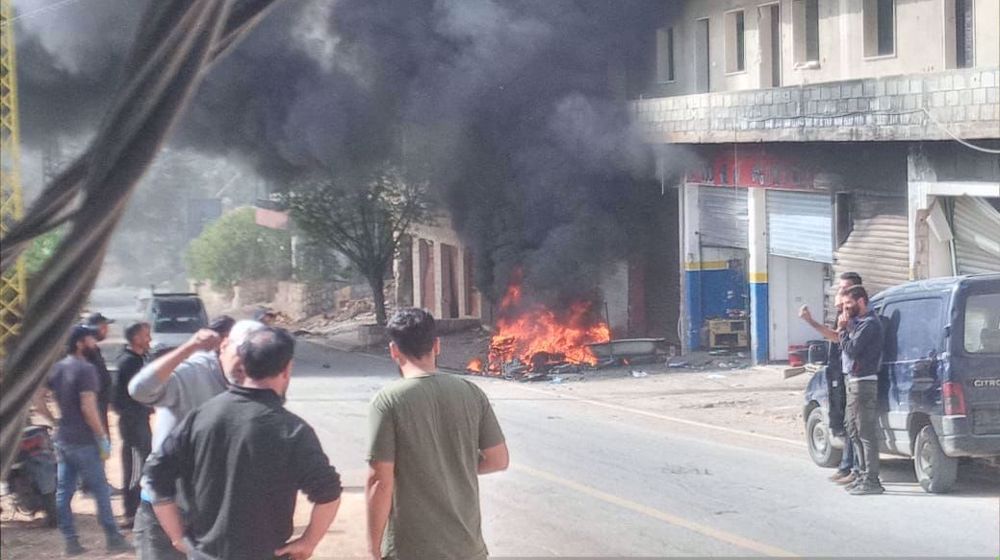
Lebanese civilian killed as Israel strikes south in violation of ceasefire
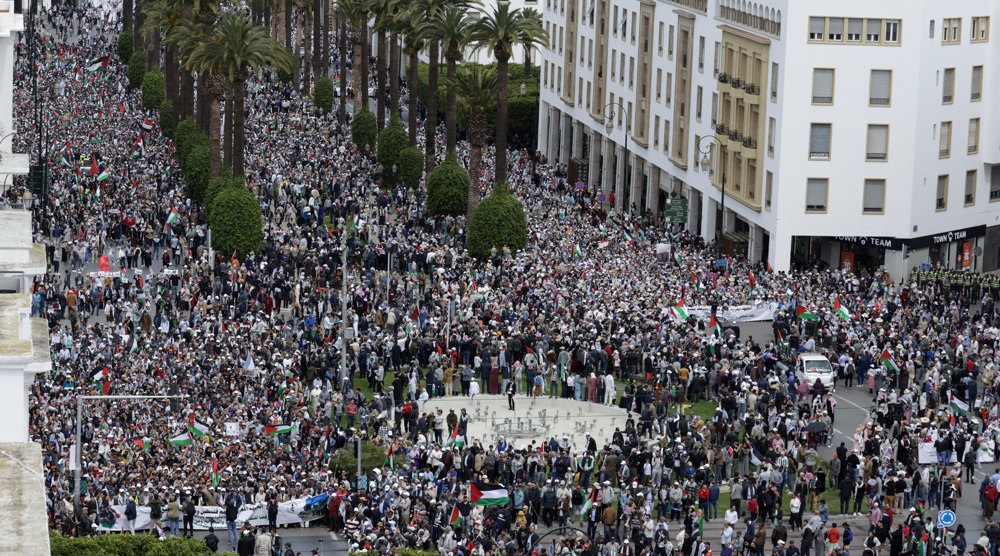
Moroccans protest against Israel’s genocidal war in Gaza, US support
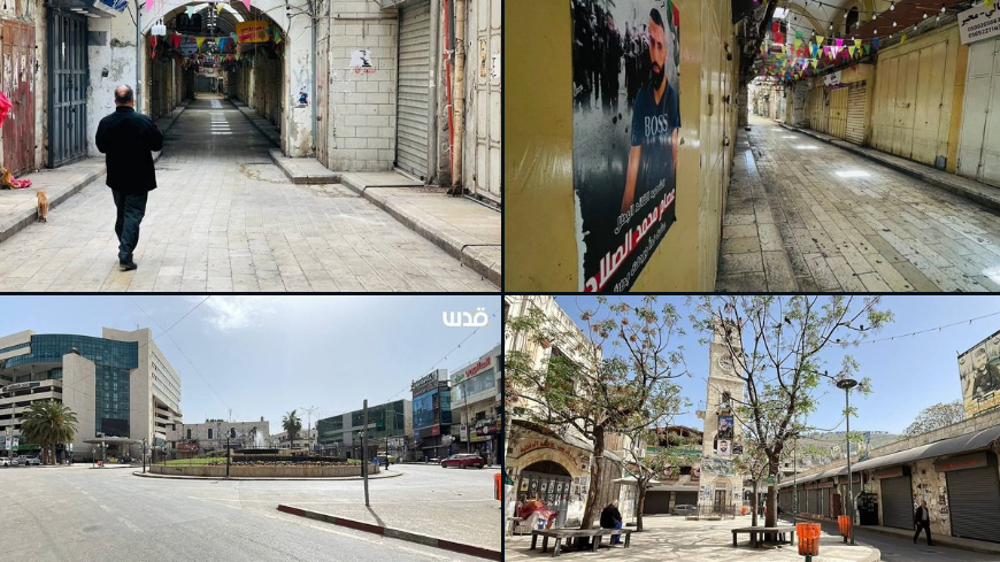
Palestinians stage general strike in West Bank as Israel intensifies Gaza genocide
American warplanes strike Yemen around 30 times in less than a day
Palestinian journalist dies from burns sustained in Israeli strike on south Gaza
Araghchi, Trump’s envoy Witkoff to hold ‘indirect’ talks in Oman: Report
VIDEO | Israel continues assault on West Bank’s Jenin as destruction campaign rages on
VIDEO | Trump claims ‘direct talks’ with Iran have started, more this weekend
Israeli protesters condemn resumption of Gaza war
VIDEO | Rally held in Damascus for Gaza, Dara'a
VIDEO | Press TV's news headlines


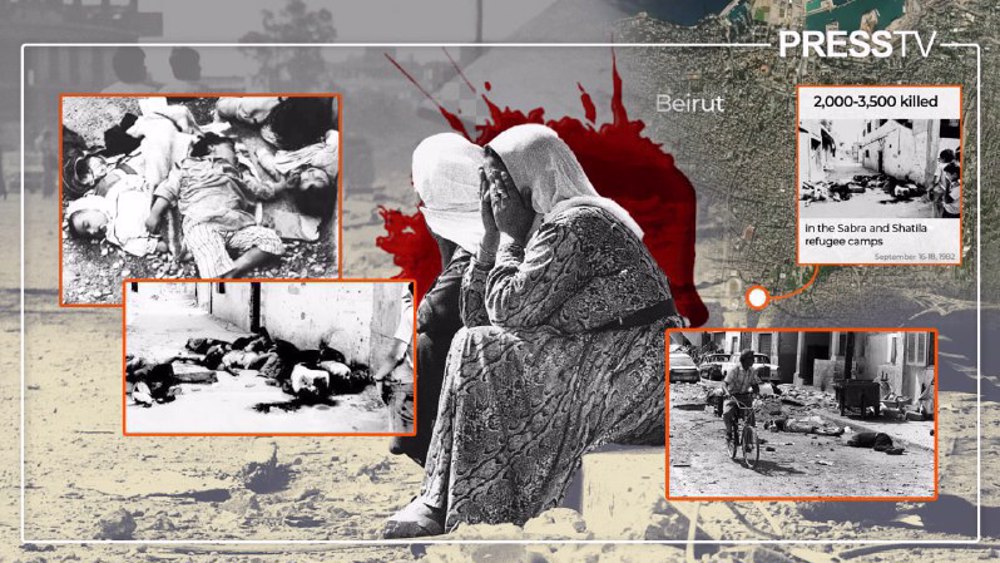



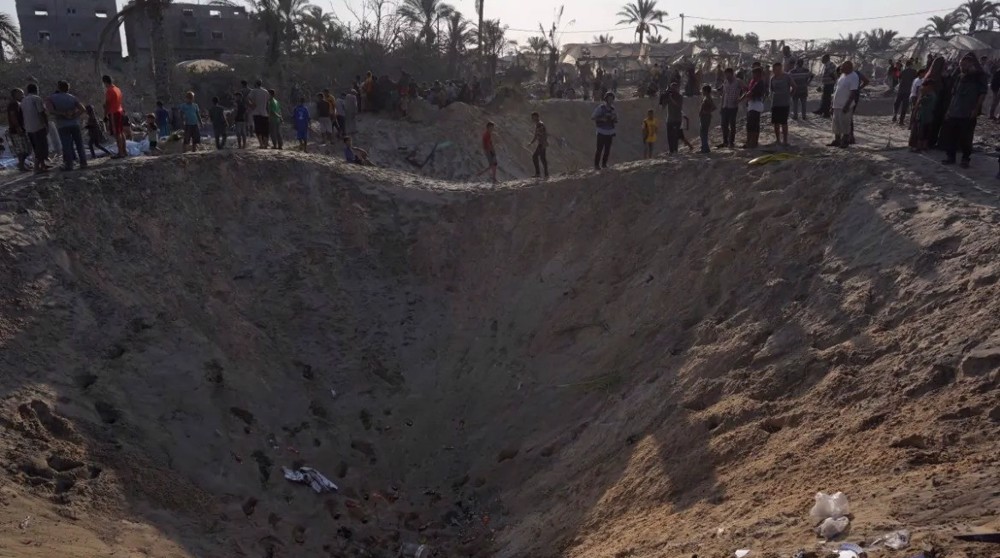
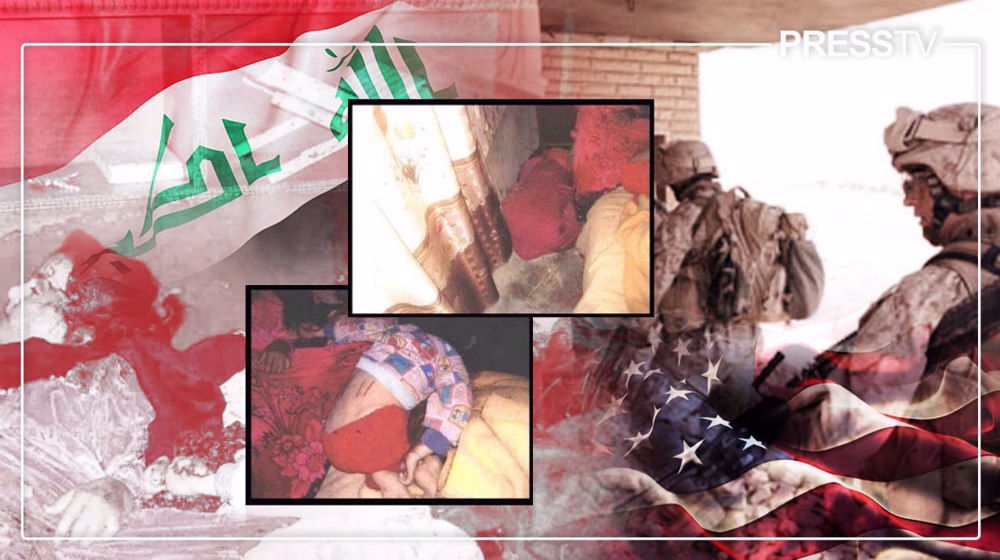
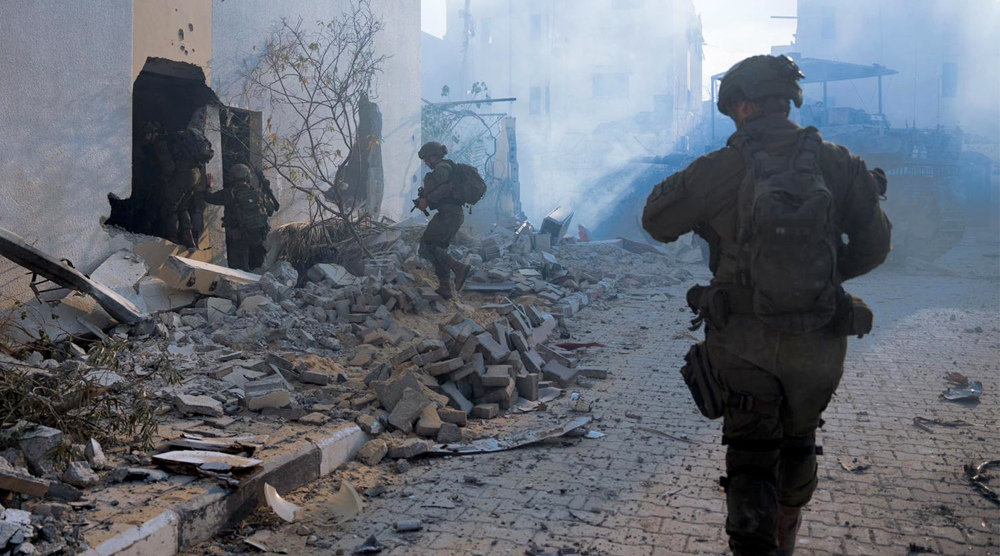
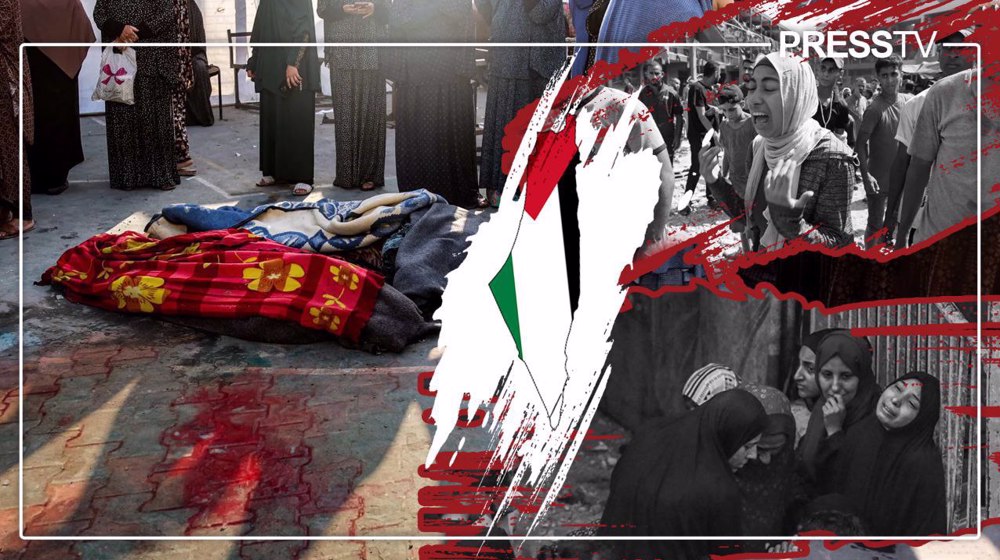
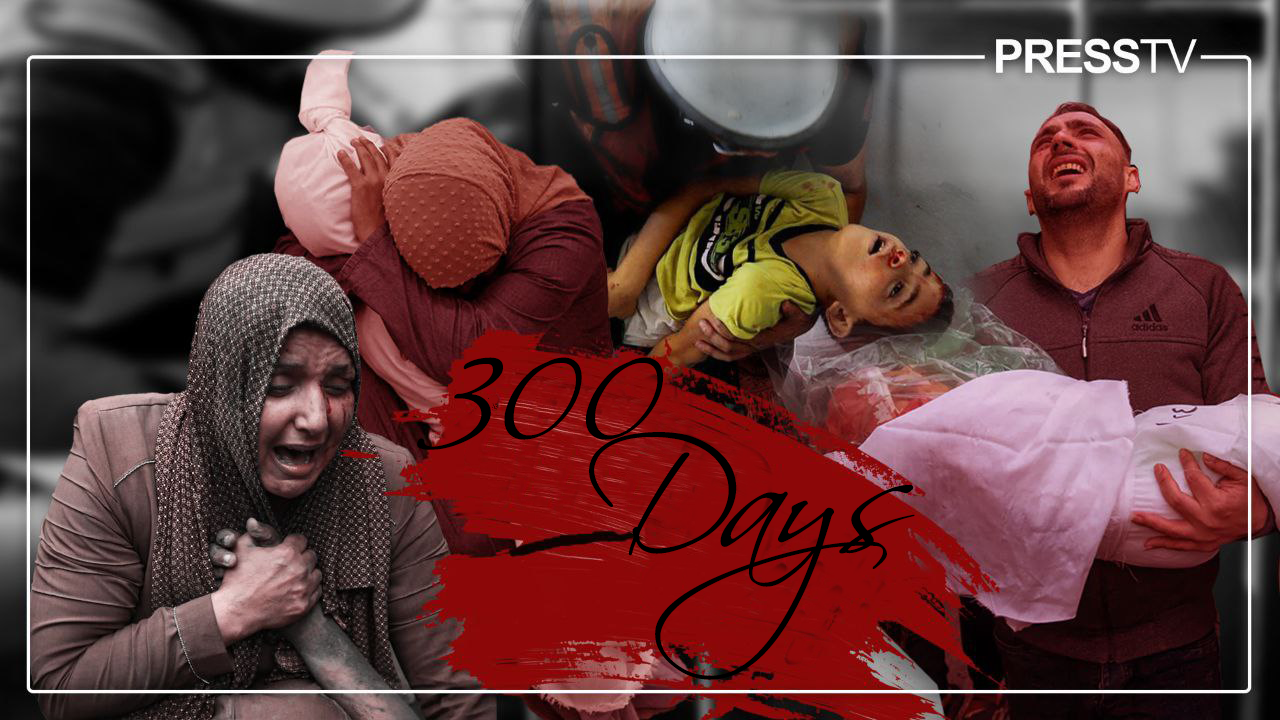

 This makes it easy to access the Press TV website
This makes it easy to access the Press TV website